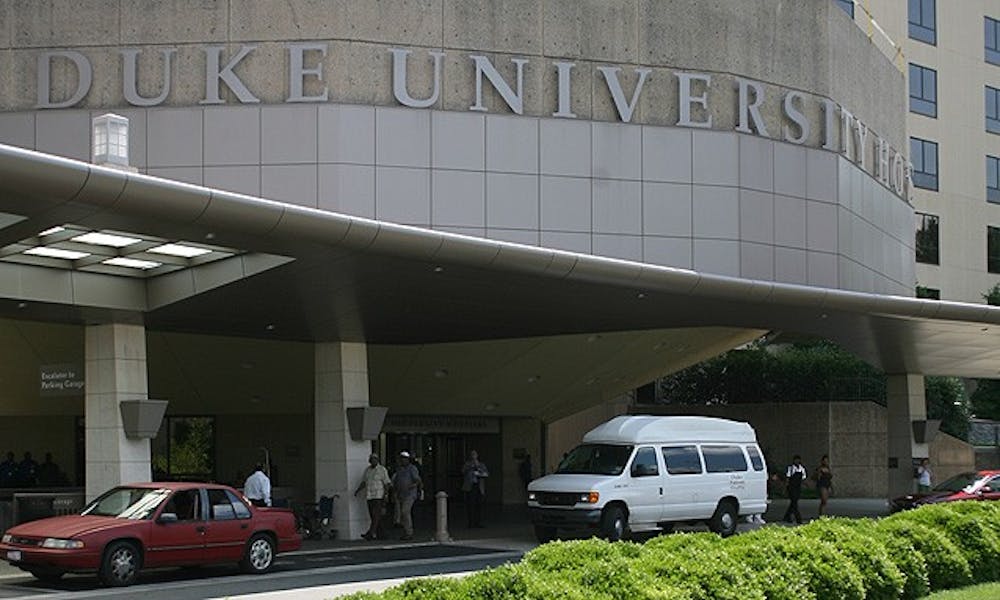Nearly a year after the officer-involved fatal shooting outside of Duke Hospital, the Durham County district attorney has announced that the actions of the involved Duke policemen were authorized.
The State Bureau of Investigation completed its review of the incident in September then turned in the results to the DA, Michael Schoenfeld, vice president for public affairs and government relations, wrote in a Tuesday e-mail.
“It is standard procedure in North Carolina for the SBI to investigate any shooting death involving a law enforcement officer,” he wrote. “The DA reviewed the findings and determined that the officers’ actions were justified, so the investigation is closed.”
Chief John Dailey of the Duke University Police Department deferred all comment to Schoenfeld given the “serious nature” of the matter.
The incident occurred March 13 at about 1:09 a.m., when DUPD officers Larry Carter and Jeffrey Liberto responded to a report of a suspicious man outside of Duke University Hospital’s main entrance. Durham resident Aaron Lorenzo Dorsey, 25, attacked the officers and tried to take one of their guns, Dailey said in a statement March 17.
When other efforts to stop Dorsey failed, one officer fired his gun and fatally wounded Dorsey in the head. Administrators declined to say which officer fired his gun.
The gunshot wound caused severe trauma to Dorsey’s brain and skull, according to the report by the Office of the Chief Medical Examiner in Chapel Hill. Dorsey also had an abrasion and laceration on the inside of his lower lip.
At the time of the incident, the DUPD officers had nonlethal weapons as well as guns on their persons, Aaron Graves, former associate vice president for campus safety and security wrote in June e-mail.
“Duke police officers do carry less than lethal weapons such as impact weapons (batons), pepper spray and we do deploy Tasers but not every officer carries one on his/her person,” Graves said in June. “As to why the officers took the specific actions they did, this information is being obtained through the investigatory process.”
When asked why the officers discharged their guns, Schoenfeld said the officers’ lives were at stake. He declined to provide further details about the incident.
“When an officer’s life is in jeopardy then it is standard law enforcement procedure to end the situation as quickly as possible so as not to harm others,” he wrote in an e-mail Wednesday.
Following the shooting, the officers were placed on paid administrative leave. Both are back on full-time duty, Schoenfeld said. Carter has worked for DUPD for 24 years and Liberto for three years.
An officer is permitted to use lethal force “to defend himself or a third person from what he reasonably believes to be the use or imminent use of deadly physical force,” according to N.C. general statutes. All DUPD officers are trained how to use lethal weapons, Schoenfeld said.
“You cannot predict when an individual will present an imminent and direct threat to others, so it is important that law enforcement officers be trained and prepared to protect themselves and the safety of others,” he said.
After the incident, the officers received psychological and other support from DUPD, Schoenfeld said, adding that DUPD has a standard process for counseling officers who are involved in shootings and other traumatic situations.
Medical tests did not find drugs or alcohol in Dorsey’s body, and no weapons were found in his possession.
Dorsey was identified as the victim four days after his death. His fingerprints were submitted to the Federal Bureau of Investigation to identify him. He was a 5-foot-four-inch, 180-pound black male with black hair and a beard. At the time of the incident, he was wearing a black jacket, grey sweatshirt, white buttoned shirt, blue T-shirt, blue jeans, black belt and black shoes, according to the medical examiner’s report.
One officer suffered minor injuries in the incident. Dailey declined to say which officer was hurt or describe his injuries, but added that the officer was treated and later released by Duke University Medical Center’s Emergency Department.
This incident marks the second DUPD-involved shooting, and the first in nearly 29 years. The last time DUPD officers were involved in a fatal shooting was Oct. 21, 1982, according to Chronicle archives. Two policemen fired at Danny Winstead about a block away from the entrance to Duke Hospital after he injured the officers with a wooden board. A grand jury later decided not to file charges against the policemen.
About 10 years later, a Durham police marksman fatally shot fugitive Ricky Lamont Coffin when he held four Duke Hospital employees hostage at gun point.
Regarding the March 2010 incident, Doug Stokke, assistant vice president of communications for Duke University Health System, deferred comment to Keith Lawrence, director of media relations. Lawrence could not be reached after multiple requests for comment.
Noelle Talley, public information officer for the North Carolina Department of Justice, declined to share a copy of the SBI report.
Get The Chronicle straight to your inbox
Signup for our weekly newsletter. Cancel at any time.

